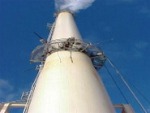
McIlvaine Forecasts Up to $3B Market for Air Pollution Monitoring, Control
Taking into account revenues for ambient monitoring systems, intermittent stack sampling, and process control using pollutant analyzers, the world market could be more than $3 billion, according to McIlvaine's latest report.
The world market for stack continuous emissions monitors (CEMs) will be $900 million this year. However, if one takes into account the additional revenues for ambient monitoring systems, intermittent stack sampling, and process control using pollutant analyzers, the market is more than $3 billion. This is the latest forecast in "McIlvaine Air Pollution Monitoring and Sampling World Markets."
Some segments are growing at double-digit rates. Continuous mass monitors are being required in a progressing number of countries. Europe has had regulations based on continuous mass performance for some time. But now the United States is following suit. McIlvaine estimates that between the requirements of three MACT rules (cement, industrial, and utility), there will be initial investments in excess of $200 million for mass particulate monitors.
Ambient monitoring systems for industrial facilities will be another hot market in the United States. The U.S. Environmental Protection Agency is planning on shifting the burden of proof to the polluters when it comes to ambient air quality impacts. So each facility will have to not only track its impact but the impact of its neighbors as well.
Service for mercury monitors is another hot segment. U.S. utilities have made the hardware investment but are waiting for the rules to be implemented before they operate the systems. In addition, cement plants and industrial boilers will be installing and operating mercury monitors over the next three years. By 2015 there are likely to be 1,500 mercury CEMs in operation. At an annual operating cost of $100,000, there will be a $150 million annual service market in the United States alone.
Asia is the fastest growing region. Developing countries first invest in ambient systems and then start investing in stack CEMs. Japan, South Korea, and Taiwan have progressed through all the stages and are fully equipped. China has moved from the ambient to the stack CEM stage. Its demand for stack CEMs for coal-fired plants exceeds that of the United States and Europe combined.
One of the biggest potential revenue generators is for outsourcing. One aspect of outsourcing is remote monitoring. The CEMs data can be used to control the process operations. The reason is that many processes are limited by the emission rate. They must maintain production capacity below the level where they exceed their regulated limits. Nitrogen oxides (NOx), hydrocarbons, and greenhouse gases create a special challenge. Meeting the NOx limits may increase hydrocarbons and greenhouse gases. So a balance has to be achieved. Automatic control systems and remote monitoring are more attractive where this complexity exists. In many cases, the extra cost for more accurate monitors is more than justified by process savings.
Increasingly, air emissions are becoming as critical as energy consumption and other factors in determining process operation. The biggest potential is for optimization systems that control the process parameters with input from the pollution monitors as well as process monitors.
For more information, visit the company's website.